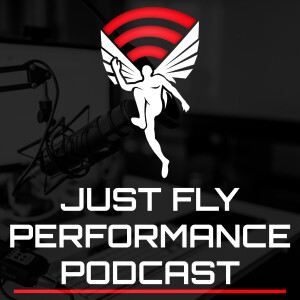
371: Jake Tuura on Full-Spectrum Tendon Training and Performance
 2023-08-10
2023-08-10
Download
Right click and do "save link as"
Today’s podcast features performance coach and tendon expert, Jake Tuura. Jake currently works as a coach and educator who specializes in hypertrophy for athletes, vertical jump development, and patellar tendinopathy rehab. Jake was a collegiate S&C coach for 7 years, with further experience in the private sector at Velocity Training Center.
Performance training is, at its’ core, simple, but within it contains many factors. The tissues involved in training include not only muscle, but bones and connective tissues. These tissues experience loading, not just in a linear manner, but also from a torsional perspective, based on pressure. While muscle tissue is by far the most commonly discussed of the muscle-bone-tendon triad, in understanding more about the tendonous and bony structures, and how they adapt to load, we can have a more thorough understanding of performance and rehab concepts.
For today’s episode, Jake Tuura covers many aspects of tendon health and performance. These include the connective tissue impact of training on hard surfaces, different elements of tendon tissue (collagen fascicles vs. the interfascicular matrix), the impact of variability on tendon health and performance, strength training vs plyometrics in tendon development, long-term developmental concepts of connective tissue in training, and much more.
Today’s episode is brought to you by Lost Empire Herbs, TeamBuildr, and Exogen wearable resistance gear.
For 15% off of Exogen Wearable resistance, follow this link to lilateam.com or use code: jfs2023 at checkout.
For 15% off your Lost Empire Herbs order, head to lostempireherbs.com/justfly.
To try Pine Pollen for free (just pay for shipping), head to: justflypinepollen.com.
TeamBuildr is an online software for coaches and trainers. I’ve continued to hear great things about the Teambuildr platform, and whether you are looking for an in-house training portal or an online training hub, be sure to check out Teambuildr training software.
View more podcast episodes at the podcast homepage.
Timestamps and Main Points
2:09 – Hard vs. soft surface training, horse racing, and bone adaptations for performance
17:24 – Structural tendon rehab concepts, regarding isometric versus non-specific loading
22:28 – The difference between heavy strength, and high rep plyometric work on tendon health and rehabilitation
24:33 – Key differences between collagen fascicles in the tendon, and the IFM, or interfascicular matrix, and what this means for training and rehab
39:42 – How variability factors into training impacts on the tendon, collagen, and the interfascicular matrix
53:20 – The multi-vector nature of tendon training given plyometric or strength movements
1:01:54 – Training based on the long-term adaptations of the connective tissue, in light of both strength and elasticity
Jake Tuura's Quotes
“That’s where the issues happen, where the tendon inserts on the bone; it makes me wonder about training on hard surfaces and hard impacts, and adapting that (bone insertion) end of the tendon”
“The tendon hole was completely filled in 5 months later, and that horse didn’t do isometrics… the animal situations where the tendons fill in without the weight room stuff, that’s fascinating”
“You do need movement to load the tendon, but do you have to do the isometrics and heavy strength? I am still going to do them”
“When a bone breaks, it’ll heal normally, but if you injure a tendon, it’ll scar”
“The tendon is stupid, it doesn’t do anything on its own; if you want to get activation, you have to activate your muscle as hard as possible, or get activation through the bone”
“When you are doing lifting, the collagen is crimped and then it goes straight, and you are making that collagen stronger”
“You have the collagen within the fascicles of the tendon, and then outside of those fascicles, you have the infra-fascicular matrix,
view more
More Episodes
012345678910111213141516171819
Create your
podcast in
minutes
- Full-featured podcast site
- Unlimited storage and bandwidth
- Comprehensive podcast stats
- Distribute to Apple Podcasts, Spotify, and more
- Make money with your podcast
It is Free
- Privacy Policy
- Cookie Policy
- Terms of Use
- Consent Preferences
- Copyright © 2015-2024 Podbean.com





